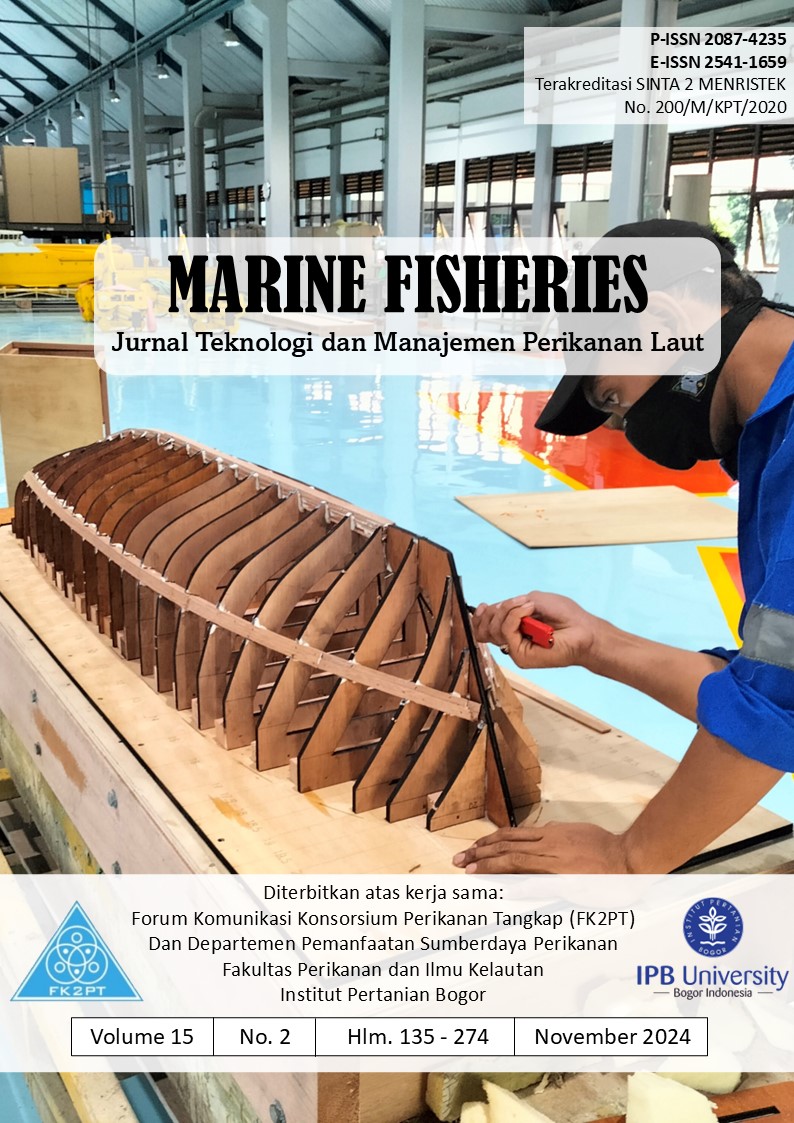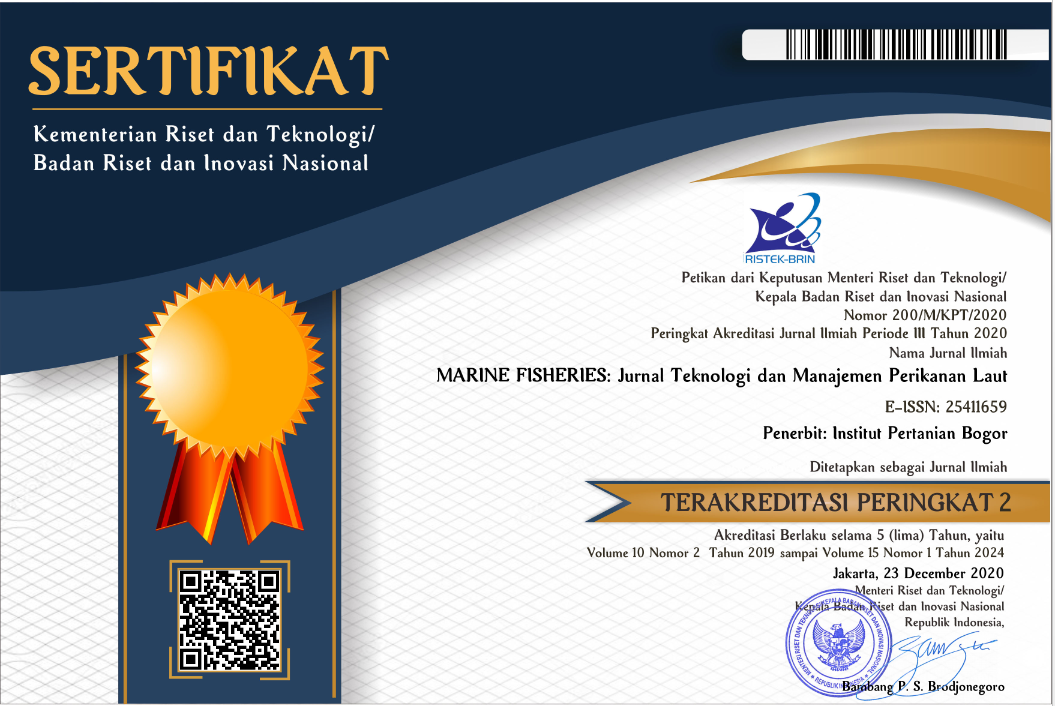CATCH COMPOSITION AND CATCHABLE SIZE OF LOBSTERS (Panulirus spp) IN LEBAK BANTEN WATERS, INDONESIA
Abstract
Information on the catch composition and catchable size of lobsters in Lebak waters remains limited, posing challenges for effective fisheries management. This study aims to assess the technical performance of the lobster fishery and analyse catch composition. Data on technical performance were collected through interviews with fishers and lobster collectors using random sampling, while a census approach was applied to measure carapace length and weight for 589 lobsters. A descriptive quantitative analysis was conducted to evaluate the length-weight relationship of lobsters. The findings indicate that fishers predominantly use polyamide monofilament gillnets with a mesh size of 3.5–4.0 inches, operating traditional outrigger boats of 2–3 GT and 7 GT for single-day fishing trips in Lebak waters. Panulirus homarus was the dominant species in the catch. The sex ratio of lobsters was imbalanced, and their growth pattern exhibited negative allometry (b < 3). An assessment of catch sizes against the standards set by PERMEN-KP No. 16/2022 revealed a high proportion of undersized lobsters in the Binuangeun Estuary, including P. penicillatus (78–83%), P. homarus (80–100%), P. ornatus (23%), P. longipes (90–100%), and P. versicolor (65–100%). Similarly, in the Cibareno Estuary, the percentages of undersized lobsters were P. penicillatus (84–100%), P. homarus (98%), P. ornatus (0%), P. longipes (100%), and P. versicolor (92%). These findings highlight the need for stricter management measures to ensure sustainable lobster fisheries in the region.
Keywords: catchable, Lebak Banten waters, length weight, lobster, sex ratio
Downloads
Copyright (c) 2024 Ndaru Narulita Sani, Ari Purbayanto, Ronny Irawan Wahju

This work is licensed under a Creative Commons Attribution-NonCommercial 4.0 International License.
Author(s) who published in this journal agree to following terms:
- Author(s) must understand and agree that the copyright script in published owned by the Marine Fisheries Journal. The copyright includes reproducing and selling the manuscript to all parties.
- Everyone can cite every manuscript published in Marine Fisheries for educational purposes, with the author's name and the Marine Fisheries Journal on reference.









